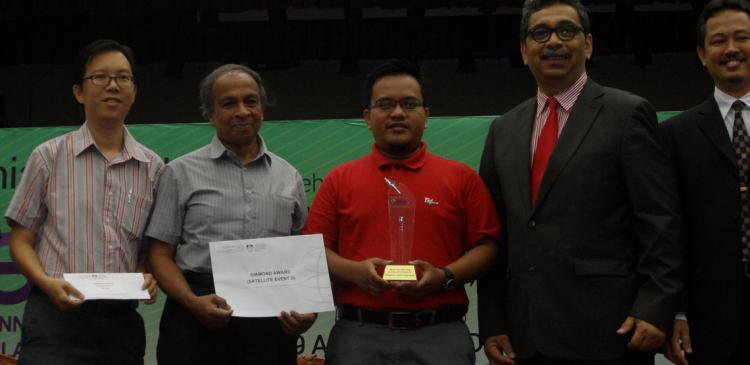Chitosan is a natural polymer derived from chitin that can be found in shrimps, lobsters and crabs. Chitosan is odorless, non-toxic, biodegradable, biocompatible and has high mechanical strength. This biopolymer has a many potential applications such as pharmaceutical and biomedical engineering, food packaging industry, paper production, textile, cements, finer and film formation, and waste water treatment. Chitosan can be applied as polymer host in polymer electrolytes (salt dissolved in high molecular weight polymer solvent). However, chitosan has poor solubility and can only dissolve in dilute acids. Hence, chitosan has been modified via N-phthaloylation in order to improve its solubility. N-Phthaloylchitosan can be dissolved in dimethylformamide (DMF), dimethyl-acetamide (DMAc), dimethylsulfoxide (DMSO) and pyridine. In this work, gel polymer electrolyte based on phthaloylchitosan has been prepared and applied in dye-sensitized solar cells.
The dye-sensitized solar cells (DSSC) have the potential as a low cost greener alternative to the available silicon (Si) semiconductor based solar cells. The Si solar cells have now reached efficiencies of the order of 25% in the laboratory and commercial Si solar panels have efficiencies of the order of 15-16%. These panels are very expensive due to the need of highly pure crystalline materials for making the solar cells. Also, toxic materials used during the production of Si result in environmental pollution. The polycrystalline Si and other thin film based solar cells are comparatively cheaper but low in efficiencies. The less expensive amorphous Si based solar cells have lower life time of around 3-4 years only.
On the other hand, DSSC, which were introduced by Michael Gratzel of Switzerland in 1991, are much cheaper as they do not require single crystal materials for their operation. A DSSC consists of a cheaper wide band semiconductor such as titanium di oxide (TiO2) sensitized with a dye to absorb light and an electrolyte containing a redox couple (usually I-/I3-). The TiO2 is a non-toxic material widely used in cosmetic industry. For DSSC fabrication, the TiO2 is deposited on a conducting glass substrate (indium tin oxide, ITO or Fluorine doped tin oxide, FTO) and form a nanoporous network of particles which leads to the increase of surface area for dye coverage. The counter electrode is another conducting glass coated with a thin layer of platinum. The electrolyte is sandwiched between the working electrode containing the dye sensitized TiO2 and counter electrode.
The operation principle of the DSSC is as follows. The photoanode consists of a transparent conducting glass (TCG) onto which is coated with a titanium dioxide (TiO2) semiconductor and soaked in a ruthenium dye. The gel phthaloylchitosan electrolyte that has been added with mediators is sandwiched between the photoanode and the counter electrode, usually platinum. The dye molecules absorb incident light and become energized. This leads to an electron being released from each dye molecule. The electrons enter and percolate the TiO2 semiconductor and leave the cell to the external circuit through the TCG and finally reach the counter electrode. At the counter electrode, the mediators capture the electrons and transfer them to the dye molecules that have released electrons after absorbing light. The dye is then replenished. The electron flow is completed and current is produced. This process continues until light is switched off. The DSSC employing N-phthaloylchitosan gel polymer electrolyte exhibited high power conversion efficiency of 7 – 8 %.




